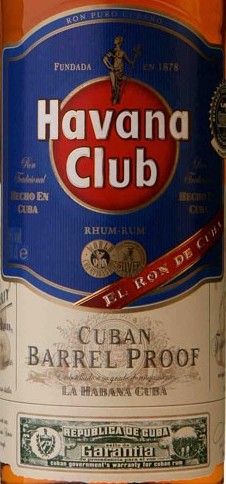
First posted 19 June 2010 on Liquorature.
So much of how I remember a drink and rate it, comes from the circumstances in which I sampled it. The woman I was with in that special restaurant when I feigned sophisticated insouciance over an unpronounceable rum. The Irish pub in Berlin where my brother and I got a little sloshed on some cheap crap tipple at a Rugby World Cup match we watched years ago, the name of which I can never remember, but which tasted so great that I go all soft with the memory long after the laughter has gone. The colour of the sunset on a tropical night in Palm Court with the best friend of my younger years indelibly linked with XM Five year old rum. The way my Newfie squaddie’s kids played with me and discussed gory horror movies as I traded shots with their father and laughed in his kitchen while my son baited his cat. The discovery of the EH5 with the Book Club. And the mild nights on the Okanagen shore where I first tasted this young rum in the company of friends.
That’s how I often remember drinks. Sure the taste and rating and all the technical details come in for discussion (it would hardly be a review without those things), but I like to take a more holistic approach to the essay, and this is why I spend as much time documenting my thinking as I do my actual tasting notes.
As I note on the Barrel Proof variant, Havana Club 7 is a true product of Cuba (made by Pernod-Ricard who own the marque), not the Bacardi family product out of Puerto Rico which is legal to have in the US. The bottle is smoky brown with a (to me) boring label, and a cheap metal screw cap (I hate cheap crap, honestly – surely a more secure plastic cap or even a cork could be added without too much additional expense?). The rum itself is lighter than the darker ones I had recently (this is an observation, not a criticism), and has an intriguing density to the liquid which causes it to adhere to the sides of my glass* and trail slowly down.
This being a seven year old rum, I have the effrontery to expect certain basic qualities from it: a medium body, mild oiliness, harsh bite and a medium quick finish (like a kiss from a girl who doesn’t mind snogging you, but doesn’t particularly like you that much either, one might say). Perhaps some casually tossed-in flavours that shyly edge around the bully of the playground, the caramel-toffee taste. What I got was a pleasant surprise: the feel on the mouth had a mild spirit burn, not a punch in the face or scratch on my neck, but which to some extent underlined the medium body. The first taste is one of light caramel, and a surprisingly mellow sweetness, less than I anticipated: and this must be deliberate because after a few seconds a marvelous fruity flavour developed out of and around that sugar, which I really liked. I think I detected some citrus and raisins (perhaps currants), but they were assertive enough to not be elbowed out of the way by either the light smoke and tannins of the oak ageing, or by the subdued sweetness and caramel – in other words, three distinct flavour profiles come through here, each in excellent balance.
The finish falls somewhat short of the flavour and mouthfeel, which is unfortunate, but not entirely unexpected (even my SDR favourite the EH5 has this problem, so I can’t whinge too loudly) – but it’s not overly harsh and biting either. It’s a good rum, and an excellent mixer – if you can take the burn, then I’d suggest not mixing it at all, but that is just me. A diet or zero coke would probably enhance the body without adding to the sweetness appreciably and that may allow it to go down better, but I was drinking fast that evening, and didn’t bother. I had it mostly with ice.
So what did I think overall? Well, it has a distinctive flavour, and I like an SDR I can take neat (even if I chose later not to do so). The trifecta of light oak, medium sweet and bold fruitiness coming together really well is a good reason to try it out. But one of the reasons I’ll regard this rum with true affection is because in a beautiful house close to the beach on Lake Okanagen last week, lounging in an easy chair on the porch, with the breeze cool but the air still warm and the sky deepening orange, I recall thinking that there are worse things in life than relaxing with one’s wife and good friends, having a casual meandering conversation of no importance, and having a glass of this rum on hand to drink.
(#024)(Unscored)
Other Notes
- I must make confession here: I’ve given The Last Hippie no end of a hard time about that tasting glass he scandalously pilfered from his daughter’s Barbie collection, but the house I was staying in had one as well…and so I used it, and was amazed at the difference it made to assessing the nose and body. I guess I’ll have to go see Toys R Us and see if they have a matching Ken glass. Score one for the Hippie 🙂
- Update 2020: This elongated bottle was phased out in the 2010s and is now a stubbier version. The exact year of the changeover is unknown
- Abbreviations: “EH5” for English Harbour 5 YO and “SDR” stands for a “Single Digit Rum”, one aged less than 10 years.
 First posted 9th June 2010 on Liquorature.
First posted 9th June 2010 on Liquorature.